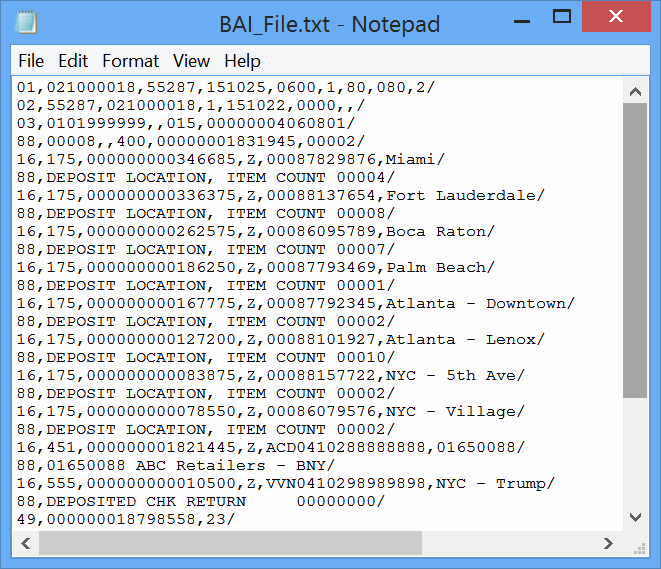I created a Windows Forms software with which I will devour the service I created earlier. When I right-click on my project and select "Add Service Reference" I can browse to the service handle or simply drop-down the "Discover" button and select a service in my resolution . Since this technique will create my proxy courses, service contracts, and knowledge contracts for me on my client utility, I need to determine on a namespace during which to place them. For this instance, I'll leave the default of "ServiceReference1". A .NET service consumer would not solely want a proxy class but additionally service contracts that symbolize the messages which might be being used. If you recall, I had determined to branch off my service and knowledge contracts into their own meeting, and now I can reuse this meeting by simply referencing it from my service consumer. The service consumer which is able to comprise the service proxies may also turn into its personal meeting. This offers me the flexibility to use these proxies from multiple consumer application. Remember that a client application does not necessarily should be a UI utility, but could be an unmanned course of as nicely. Having my service shopper proxies in their very own assembly could be analogous to branching out the business layer of a standard object-oriented architecture in order to make it accessible by numerous consumer tiers. In the later examples, I'll go into element about tips on how to create proxies and the choices out there to you. It is a framework which is used for constructing, configuring and deploying interoperable distributed companies. Using WCF, you can ship data as asynchronous messages from one service endpoint to another. A service endpoint could be part of a constantly obtainable service hosted by IIS, or it can be a service hosted in an application. An endpoint is normally a shopper of a service that requests knowledge from a service endpoint. It supplies a facility to put in writing safer, versatile providers with none code change. It facilitates you to enable/disable logging using configuration. In the Add Service Reference dialog box, specify the service metadata handle and click on on Go to view the out there service endpoints . Specify a namespace to comprise the generated proxy, then click OK to generate the proxy and update the config file. Use the Discover button to discover WCF providers in your own solution, as long as they're hosted both in a website project or in one of many WCF service library project types.
In the case of a web site project, Visual Studio 2010 will both retrieve the metadata from IIS or launch the ASP.NET file system–based improvement server. In the case of a WCF service library, WCF will routinely launch its host (WcfSvcHost, described within the sidebar titled The WCF-Provided Test Host) to get the metadata. In your software or library, it's a greatest apply to create your own custom exceptions. In the identical way is it a best apply to create fault contracts and return these to your client. Fault contracts are just information contracts so you should not have any bother defining them. Just don't forget to add them to the strategies on your service interface. I selected the 2 hosting scenarios so I can expose a public service utilizing IIS in HTTP and a personal service using TCP being hosted in the console application. Remember earlier I stated that endpoints are created on a per-contract basis. You also noticed that I split off my public and admin features into two separate service contracts. Given this data, you can conclude that each service contract will must be exposed utilizing its personal endpoint and may thus be uncovered using its own host. I want to host the IProductBrowser contract utilizing IIS and HTTP so I don't should take care of any firewall points and might deploy as seamlessly as potential while allowing shoppers of any kind, not just .NET WCF ones. The IProductAdmin contract will be exposed using a TCP host operating in a console application since it'll sit inside a firewall. This service will profit from the pace of TCP and can only be consumed by .NET clients. I might have certainly chosen to host each service contracts using my IIS resolution, however I would be limited to HTTP transport on a service that might not be public and can sit inside a firewall. You can in all probability already see the advantages of decoupling the hosts from the the rest of the parts. This tells WCF to publish the service by default using related semantics as the old ASMX type services. Note the Factory attribute which is about to WebScriptServiceHostFactory which offers a pre-configured manufacturing facility for typical MS AJAX type conduct. Using the factory makes the method very straightforward as you don't need to create any internet.config entries to configure the service though you can still try this to override specific settings. I'll use the "Add Service Reference" characteristic in Visual Studio.
This is the largest wrongdoer for anti-reusability and configuration bloat. Not only that, I don't even wish to address my providers directly from my purchasers. As I defined earlier, service customers use a proxy class to be able to access a service's implementation. This proxy class just isn't troublesome to put in writing and, in fact, attacking this manually provides you a couple of totally different selections. I'm working here underneath the idea that both sides of my software are .NET after all. The third project template, referred to as the "WCF Service Library", creates all the above with the exception of the service host. The project template adds configuration data in an app.config file. I find this a bit misleading as a end result of configuration information are only used in the client application and not in a library project. An operation contract defines the parameters and returns sort of operation. When creating an interface that defines the service contract, you signify an operation contract by making use of the OperationContractAttribute attribute to every method definition that is part of the contract. The operations could be modeled as taking a single message and returning a single message, or as taking a set of types and returning a kind. In the latter case, the system will decide the format for the messages that need to be exchanged for that operation. WCF services in enterprises are used for growing distributed enterprise software. There are lots of advantages of using WCF providers. WCF service can be uncovered on multiple endpoints e.g. HTTP, TCP etc. and the shopper purposes have a choice to select the precise endpoint for the communication. WCF 3.5 had introduced help for Representational State Transfer using which the response from the service could be instantly send using Plain Old Xml form . If the WCF service is utilizing REST/POX, then it isn't essential for the shopper to eat the WCF service proxy. A shopper utility that can do HTTP communication and may course of XML, may now directly make a name to the WCF service and carry out operations utilizing XML. I'm not going to bore you and start speaking details about how I would write my client purposes, and besides I'd in all probability be insulting your intelligence.
The necessary issues to note are that any client functions I need can access any of my service contracts merely by referencing the appropriate consumer proxy meeting and instantiating its proxy classes. It's as easy as that and I will leave you with one instance. Besides, I nonetheless want to point out you the way to configure the client. My subsequent project might be known as Service and will reference not only System.ServiceModel but my Contracts assembly as properly. This project will comprise one service class referred to as ProductService. This service will provide implementations for each the IProductBrowser and IProductAdmin contracts, however this on no account implies that a consuming consumer will be exposed to each sets of implementation, as you'll see later. The implementation in this service will be the meat of my service and may call out to something it must perform its functionality. In the interest of time and printed house I won't present an in depth implementation so you'll should settle for commented pseudo-code. It's this layer of code that may call out to both another service and/or a number of enterprise engines or ORM layers to perform its duties and return data to the calling shopper. Listing four exhibits the code for the ProductService class. I'll start on the backside of the stack and design my data contracts first.
Since I'm solely going to focus on the Product aspect of the system, I'm solely going to create one knowledge contract referred to as ProductData. This contract will comprise knowledge having to do with product information. For the purpose of the remainder of this article, I'll hold all my examples so simple as attainable. I'll place my information contract class into an meeting I'll name Contracts, which will later contain my service contract as properly. The ProductData class will use the DataContract and DataMember attributes that come from the System.Runtime.Serialization meeting that I should reference. Whenever the consumer sends a request to a WCF service, what precisely occurs behind the scenes? Basically after making a consumer request the WCF service will create a service class instance on the service that will do the operations concerned and then it'll return the response again to the consumer. In this request and response course of the service instance object has been created in the process. When you add a service reference in Visual Studio 2010, it's going to additionally attempt to automatically edit the client's config file and insert the required shopper part describing the service's endpoints in it. Visual Studio 2010 similarly butchers the config file when updating a service reference. One of my areas of experience is within the popular CSLA enterprise framework developed by Rockford Lhotka.
CSLA is a framework that gives much to both Windows and ASP.NET development, but due to the basic variations between these two platforms, lends itself to being extra function rich in a Windows platform. CSLA does indeed offer you features like this but who says that the data-access portion of CSLA-based objects want to make use of ADO.NET (or a data-access-layer) in order for them to work? The approach required in such a state of affairs is the one which makes use of ChannelFactory as a end result of CSLA, like most business frameworks, offers you base classes from which to inherit so using the ClientBase class is out of the query. Notice that the ASP.NET app's configuration doesn't have an handle. That's as a result of earlier I mentioned that the tackle of the service would be the deployment URL of the ASP.NET software adopted by the name of the SVC file I added. The console app, on the other hand, does have an handle within the configuration. The final half is the contract that each endpoint will expose. In WCF, Duplex messaging or call-back is used to speak with the shopper. Over totally different transport system Duplex messaging in WCF is done like TCP, Named pipe and even HTTP. Collectively this is called duplex contracts in WCF. Basically duplex service contract is a message change pattern by which each endpoints can ship messages to the other independently. A duplex service, subsequently, can send messages again to the shopper endpoint, providing event-like behavior. Duplex communication occurs when a shopper connects to a service and supplies the service with a channel on which the service can ship messages again to the consumer. Note that the event-like habits of duplex services solely works within a session. Creating all the parts of a WCF-based system manually is easy and allows for a more calculated design process, maximizing reusability and maintainability. Remember that assemblies ought to be logically grouped within a given class, meaning contracts, companies, hosts, or proxies. But they should positively not cover multiple classes; excluding information contracts and repair contracts. Service orientation is not a substitute for object orientation or element orientation.
The second approach I'll use is useful because as you'll find a way to see, the ProductClient class inherits from ClientBase using up our one and only base class candidate. Since .NET solely permits single-inheritance, I'm caught with inheriting from this class if I need to entry my channel. Another state of affairs the place the earlier method wouldn't suffice is that if I wish to create a proxy class to deal with multiple service contract. Inheriting from the ClientBase class restricts this consumer proxy class to using only one service contract. Fortunately there's a way to obtain a service's channel with out mechanically having a category like ClientBase create it for me. I won't over-criticize this configuration as a result of it's not really overkill. While the minimal that's needed in order to host this service is sort of much less, the extra information that was created for me may be pretty useful. When I mention a service's minimal configuration, I'm referring to the service's endpoint. Using this feature is one of the habits I wish to get you out of on this article, so I choose to not have this included in my configuration. These types of points are attributable to developers performing incorrect error handling and incorrect disposal of the client and connection. Microsoft really is responsible for starting this mess, as they created an API that does not conform to typical practices - and even their very own guidelines!
For instance, Microsoft's guideline isn't to throw an exception from a Dispose method - however the WCF shopper code does precisely that. At the end of the day nonetheless, it is the duty of individual developers to bear in mind of the problems and design restrictions and create software program that works correctly. WCF vNext provides assist for async mannequin in both the server and the consumer facet. It supplies new Task-based overloaded methods to facilitate asynchronous programming. In a Task-based asynchronous mannequin whenever you invoke a generated proxy method, a Task object is constructed that represents the asynchronous operation and this Task is returned from this service method. At one finish MS Visual studio provides a utility perform referred to as as svcutil which takes WSDL file as a parameter and generates a proxy for client and a configuration file.WSDL file has the wcf services and not webservices. The Syndication Service Library project allows you to implement an RSS feed over a WCF endpoint. It starts off with a simple service contract that returns a feed, its implementation, and a matching config file. You can host and expose your feed like some other service. The syndicated endpoints make use of the WebHttpBinding binding. WCF and SOAP were based on the idea of robust contracts, so you could generate WSDL for your contracts and tools like VS Add Service Reference could generate shopper code based mostly on the WSDL. Also, REST tends to be resource-centric, whereas SOAP leans toward operation-centric API's.
These are the explanation why VS doesn't supply "Add Service Reference" for RESTful services. Assuming you're referring to Web API , let me see if I can add some clarification. The other problem with Web API is that it duplicated many constructs from MVC 5, similar to filters, routing, DI and configuration. MVC Core completely eliminates that duplication with a single unified internet stack. On the contrary, some implementations of Request/Response sample are quite difficult, you want to create a request, then the handler, then configure the IoC engine, and so on and so on. The thought here is that if I have been implementing my entire architecture as illustrated in Figure 2, I would also have an OrderClient proxy class which would be used to access the operations on the IOrderPlacement service contract. However, I would really like the IOrderBrowser and IOrderAdmin service contracts to be dealt with by the AdminClient proxy client, by which case I couldn't inherit from ClientBase. Instead I would use the method I've simply illustrated and likewise implement the other two interfaces. I would, after all, have two extra channel objects within the class. As you can see, the ProductClient class actually turns into a proxy to my service; an entry level into accessing my services implementation. Except for configuration, which is ready to reside on the consumer application level, this is all there may be to this system of proxy class creation. The next pieces of my design I want in their very own assembly are the services themselves. I'll split these up into a number of assemblies based on the categorization I mentioned earlier. At the very least, I'll have one meeting for all my providers, however chances are I'll have several depending on what quantity of companies I really have and their potential for inter-project reusability. Service projects will reference a number of of the contract assemblies I described beforehand. Also, relying on what these providers do, there could additionally be a quantity of business engines behind the scenes performing business logic or object-relational-mapping. From this level and down to my database, there could be a similarity to a conventional enterprise layer/data layer separation of issues.
You'll notice then that the service layer acts as a procedural entry point into what can be an elaborate object mannequin, proving that OOP didn't die due to SOA. The first piece of a service-oriented design I need to pull into its personal meeting is the contracts. Though one of many tenets of SOA is that companies ought to have the ability to service any kind of consumer, as .NET developers I'm keen to say that most of the times you might be coping with .NET on each side. In anticipation of this, I like to have both my service contracts and information contracts in their own assemblies. In the earlier section I advised you that Visual Studio created a duplicate of these on my client. Since I won't be using the identical method to devour a service this time round, I'll have to create my very own copies of the service and data contracts. By placing them in their own assembly I'll be in a position to reuse this assembly by each my service and my client. When it goes wrong - for instance, on a server - there could be a spectacular flurry of activity! It may be amazing to see how rapidly IT departments can move when a server hosting core enterprise services starts failing as a result of custom server purposes leaking resources and using many Gigabytes of memory. Unfortunately it takes such an event for many businesses to concentrate to the necessity for higher-quality software program improvement practices and testing. The IErrorHandler implementation have to be added to the ErrorHandlers property of the service. Both require some code that is an excessive amount of to post right here but yow will discover it on MSDN or from this CodeProject.com instance. Either you create a custom attribute you could add to your service class, or you create a WCF service conduct you could then add to your internet.config file. Service Oriented Architecture is an architectural method in software program improvement the place the applying is organized as "Services". Services are a group of methods that comprise the enterprise logic to connect a DB or different providers.


































































